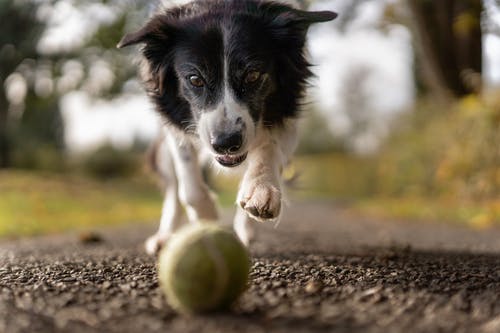
What Does a Typical Doggy Day Care Schedule Look Like?
For many dog owners, the thought of leaving their furry friend alone while they are at work or away can be distressing. Thankfully, modern pet care solutions like doggy daycare centers have become increasingly popular, helping to ease the worry. The question now becomes, what does a typical day look like for Fido at one of these centers, and is it the right fit for your pet? This article seeks to answer these questions, providing insight into how doggy daycare works, what to expect, how to prepare your pet, and more.
Choosing the Right Doggy Day Care
Choosing the right doggy daycare can be a daunting task. Various factors need to be taken into consideration, such as:
- Location: Proximity is crucial for convenience, especially for puppies that need more frequent visits.
- Staff Qualifications: Ensure that the staff can handle emergencies and are trained in animal behavior.
- Facility Cleanliness: A clean environment is healthy and attractive for pets.
- Reviews and Recommendations: It is wise to listen to the experiences of other pet owners. Positive feedback can steer you in the right way.
What Happens at Doggy Day Care?
While no two doggy daycares are the same, a standard schedule often looks like this:
Arrival and Morning Routine
The day begins with a structured check-in procedure, letting owners know their furry friend is settled. After check-in, it’s socialization time. Dogs are placed into play groups according to size and temperament, which promotes social growth.
Morning Nap Time
Just like toddlers, dogs need downtime. This is when dogs can rest in individual kennels, allowing them to revive energy for the afternoon.
Afternoon Activities
Post-nap sees a slew of activities for the dogs, almost likened to enrichment doggy daycare. These could include:
- Behavioral Training: Promotes good behavior and interaction.
- Physical Exercise: Activities like fetch or agility courses to keep them active.
- Interactive Games: From puzzles to tug-of-war, these games keep dogs entertained and mentally sharp.
- Cognitive Stimulation: Through obstacle courses, dogs enhance decision-making skills.
Afternoon Rest and Meal Time
After a day of play and activities, the dogs are given another rest period. Meals are also served during this time, observed to avoid any potential food aggression.
The Impact of Doggy Day Care on Behavior
Doggy daycare usually has a profound effect on dog behavior. Most dogs become socially adept, less anxious, and more playful from daily interaction with other dogs. On the other hand, if not properly managed, some dogs can exhibit signs of exhaustion or stress from too much activity or interaction.
Doggy Day Care Rules and Regulations
Most doggy daycares impose rules and regulations for the safety of the staff and dogs. These include vaccination requirements, behavioral expectations from the pet owners, and protocols for dogs’ health and emergencies.
Preparing Your Dog for Doggy Day Care
Transitioning your dog into daycare is a significant step in your pet’s life. It’s essential to prepare adequately, and here are the steps you should consider:
- Gradual Introduction: Like children on their first day of school, dogs can be anxious about the sudden change of environment. Start by letting your dog spend a few hours at daycare. Slowly increase the hours each day. This way, your dog will gradually get comfortable with the new surroundings, unfamiliar faces, and other dogs.
- Pack Essentials: Make sure your dog has all it needs for a day at daycare—this in finding a leash and maybe a favorite toy or blanket. Packing familiar items might help reduce stress in your dog.
- Ensure Health Checks: Doggy daycares require all dogs to be current on their vCareful, including rabies and distemper. Having them on heartworm, flea, and tick prevention is a good idea to protect all attending dogs. You should also schedule regular veterinary checkups to ensure your dog remains healthy.
- Talk to the Day Care Staff: Before sending your dog to daycare, talk to the staff. Let them know about any quirks or medical concerns your dog may have. Also, ask about their procedure regarding illness or emergency injury. The more informed the daycare staff is, the safer your dog will be.
- Socialization Training: Before daycare, ensure your dog is used to being around other dogs and people. Enroll them in behavior and obedience classes, learn their comfort zones, and slowly introduce them to other dogs in controlled environments.
- Mental and Physical Stimulation Pre-Daycare: Ensure your dog is calm and happy before heading to daycare. This could mean a walk or a few minutes of play at home. Dogs behave better When they are mentally and physically stimulated before reaching daycare.
- Keep Goodbyes Short and Sweet: Long, emotional goodbyes can make your dog anxious and nervous. So, when dropping off your dog, ensure it’s brief to keep the transition stress-free.
Dog Boarding
There may also come a time when you’ll need to confirm dog boarding in Madeira, OH, or your respective location for extensive time away.
How Much Does Doggy Day Care Cost
Costs for doggy day care differ greatly, depending on location, amenities, time spent, and additional services. It’s necessary to date what services and features are important to you and your dog and evaluate the costs.
Whole Dog Care
Ultimately, choosing the right doggy daycare is about considering Whole Dog Care. Like facilities similar to Central Bark, finding a place that looks after your dog’s physical, emotional, and social well-being is crucial.
Conclusion
Choosing and preparing for doggy daycare is a big step for you and your furry friend. Careful selection and attentive preparation can benefit your dog’s routine, providing them with socialization, exercise, and enriching activities. Remember, the ultimate goal is to ensure your dog is happy and healthy.


